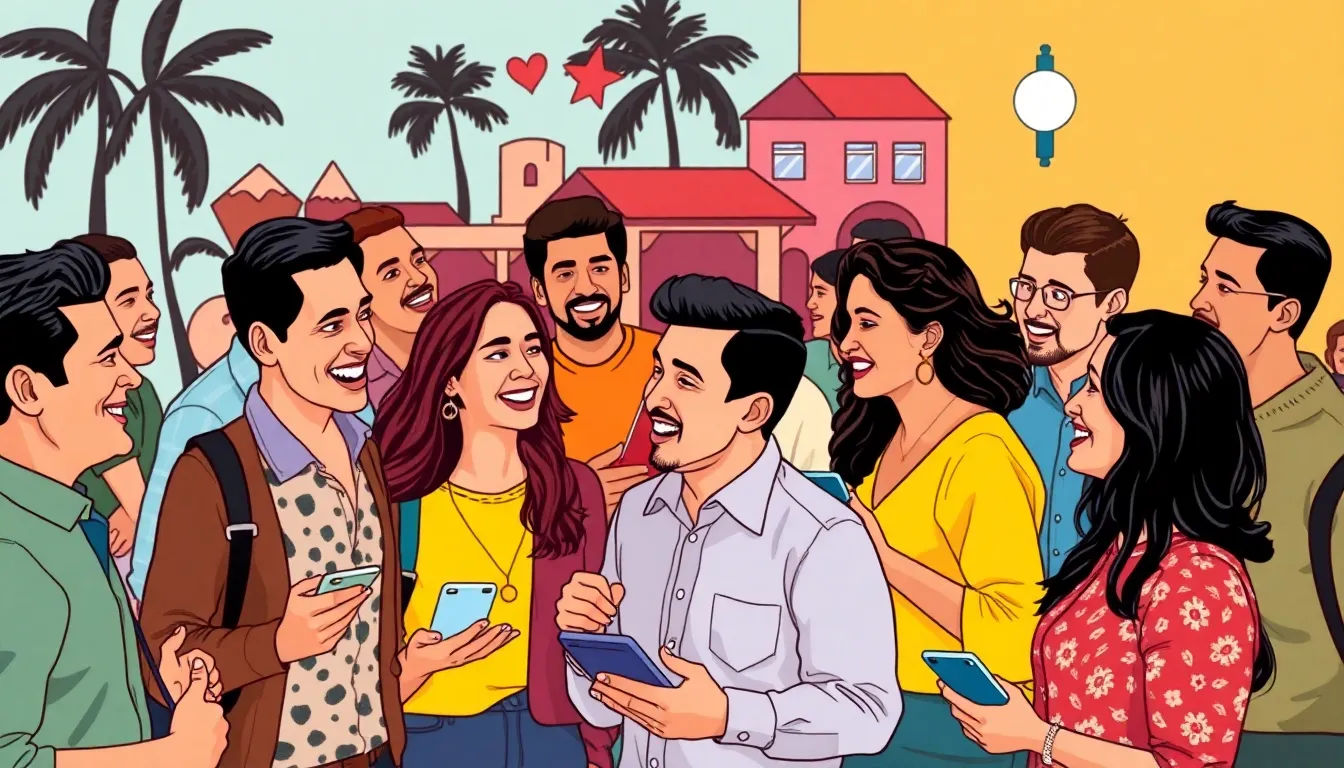In today’s digital age, the court of public opinion reigns supreme. It’s where hashtags become verdicts and tweets can seal your fate faster than a speeding bullet. Forget the traditional courtroom drama; the new gavel is a smartphone, and the jury is anyone with an internet connection.
People often underestimate the power of public perception. One viral meme or a well-timed post can catapult a nobody into the spotlight or sink a celebrity’s career faster than you can say “cancel culture.” Understanding this modern courtroom is crucial—it’s a wild ride filled with opinions, outrage, and the occasional cat video that somehow manages to steal the show. Buckle up as we dive into the fascinating world of public opinion, where justice is served with a side of likes and shares.
Table of Contents
ToggleUnderstanding The Court Of Public Opinion
The court of public opinion plays a crucial role in shaping societal perceptions and outcomes. In today’s digital age, this concept has gained heightened significance, particularly through social media platforms.
Definition And Significance
Public opinion refers to the collective attitudes and beliefs of individuals in society regarding various issues. This sentiment can significantly influence reputations and career trajectories. Social media acts as a catalyst, amplifying voices and opinions. Viral hashtags and trends often reflect this collective judgment. The significance of the court lies in its ability to affect change, hold individuals accountable, and shape narratives. Public sentiment often dictates whether someone is celebrated or criticized. As a result, understanding its dynamics becomes vital in navigating modern society.
Historical Context
Historically, public opinion existed long before the advent of social media. Traditional forms, such as newspapers and television broadcasts, shaped perceptions and influenced public sentiment. Over time, the rise of the internet revolutionized these dynamics. In the early 2000s, platforms like blogs began facilitating immediate feedback. The emergence of social media around 2004 accelerated this trend, allowing rapid information sharing and opinion formation. Events like viral scandals or movements, such as #MeToo, exemplify the power of public opinion today. Consequently, the court now acts as a complex interplay of voices, reflecting societal values and expectations.
Mechanisms Of Influence
Public opinion operates through various channels, significantly impacting individual reputations and outcomes. Understanding these mechanisms highlights how perceptions shift in today’s society.
Social Media Impact
Social media platforms serve as powerful tools for shaping public opinion, rapidly amplifying voices and opinions. Viral hashtags often reflect collective sentiments, making individuals or issues widely recognized. The speed at which information spreads can lead to quick judgments, sometimes without substantial context. Cases emerge daily where trends dictate public perception, showcasing both support and backlash. Engagement metrics such as likes, shares, and comments further influence narratives, reinforcing certain viewpoints over others. The impact of these platforms emphasizes the necessity of navigating online interactions carefully.
Traditional Media Role
Traditional media historically served as a foundational source of information and public opinion shaping. Newspapers, radio, and television have long influenced societal perceptions through curated reporting. Journalistic integrity contributes to shaping public sentiment and societal norms. Coverage of pivotal events often dictates public reaction and awareness levels. Additionally, traditional media provides context that may not exist in social media’s fast-paced environment. While social media currently dominates, traditional outlets still carry weight in forming opinions and perspectives across diverse demographics.
High-Profile Cases
High-profile cases illustrate how the court of public opinion functions in real-world scenarios. These situations highlight the significant impact of public sentiment on individual lives.
Case Study: Celebrity Trials
Celebrity trials frequently capture public attention, often overshadowing legal proceedings. Notable examples include the O.J. Simpson trial and the Johnny Depp-Amber Heard case. Both instances stirred immense public debate, driven by social media commentary and celebrity involvement. Simpson’s trial showcased a divided public, with opinions shaped by race, fame, and media coverage. Meanwhile, the Depp-Heard trial demonstrated the volatile nature of public sentiment, influencing perceptions of domestic violence. Such cases reveal how celebrity status amplifies scrutiny, transforming legal battles into media spectacles.
Case Study: Political Scandals
Political scandals underscore the power of public opinion in shaping political landscapes. Events such as the Clinton-Lewinsky affair and the Watergate scandal exemplify this dynamic. Clinton’s scandal affected his presidency and the public’s trust in government. In contrast, Watergate led to Richard Nixon’s resignation, highlighting accountability in the political sphere. Both scandals ignited widespread debate, fueled by news coverage and social discourse. Political figures navigating scandals face intense public scrutiny, where opinions can shift rapidly based on emerging information. These instances clarify the intense interplay between public perception and political realities.
Psychological Aspects
Understanding the psychological aspects of the court of public opinion reveals how societal perceptions take shape. The collective beliefs held by individuals function as a powerful force that influences outcomes.
Public Perception Formation
Public perception is formed through various mechanisms, including media exposure and social interactions. Information shared on social media often spreads rapidly, shaping the public’s view almost instantaneously. Observers draw conclusions based on trending topics or viral content, typically without comprehensive context. Engagement metrics signal approval or disapproval, impacting visibility and further shaping opinions. Individuals’ reactions can snowball, leading to either widespread support or significant backlash within mere hours. This rapid feedback loop emphasizes the importance of understanding public sentiment formation in the digital age.
The Role Of Bias And Emotion
Bias and emotion significantly impact how individuals process information related to the court of public opinion. Emotional responses drive reactions, often eclipsing rational analysis. People tend to favor narratives that align with their beliefs, leading to selective exposure of information. Decisions made in moments of heightened emotion lack the depth of consideration necessary for balanced judgment. Media portrayals can evoke strong sentiments, further exacerbating biases. The interplay between personal values and emotional triggers highlights the complexity of shaping public opinion in today’s information environment.
Implications And Consequences
The court of public opinion has profound implications for individuals and society, often disrupting traditional processes and accountability.
Justice System Interference
Public opinion can significantly interfere with the justice system, as high-profile cases often become public spectacles driven by media narratives. Legal outcomes sometimes hinge on societal sentiment rather than evidence presented in court. For instance, intense scrutiny can pressure law enforcement and judicial entities, incentivizing them to act in alignment with public sentiment. This phenomenon raises concerns about the impartiality of justice. In cases where public outrage is high, jurors might feel compelled to render verdicts influenced by outside opinions, challenging the principle of a fair trial.
Long-Term Effects On Individuals
Long-term effects on individuals shaped by the court of public opinion can be severe. Those subjected to public scrutiny often experience reputational damage, even if later exonerated or proven innocent. Career trajectories frequently alter due to viral campaigns that amplify negative perceptions. For example, social media fallout can lead to job loss, diminished professional opportunities, and mental health struggles. Individuals might face ostracism from their communities, resulting in a lasting stigma tied to public opinion. Recovery is possible, but the road often remains difficult, as public memory can linger, affecting personal and professional lives for years.
The court of public opinion wields immense power in shaping societal narratives and individual lives. Its influence is magnified in a digital age where social media serves as both a platform and a battleground for opinions. As public sentiment can shift rapidly, understanding this dynamic becomes crucial for navigating personal and professional landscapes.
The consequences of public judgment can be profound and far-reaching, affecting reputations and mental health. As individuals engage with this evolving phenomenon, recognizing the complexities and potential biases within public opinion is essential. Ultimately, the ability to critically assess the narratives that emerge in this court can empower individuals to make informed decisions and protect their interests in an ever-changing world.




